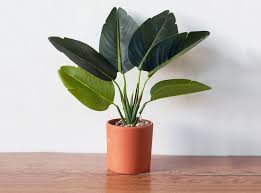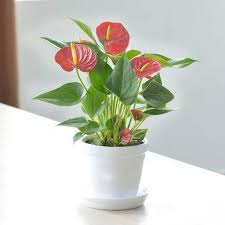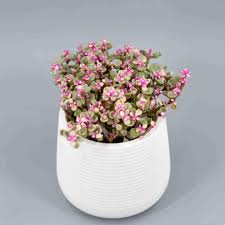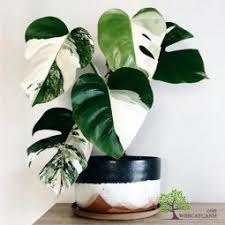The Symbolism of Stone Lions in Front of Palaces
Throughout history, stone lions have been a prominent architectural feature, particularly in the grand entrances of palaces, temples, and government buildings across Asia. These majestic and powerful statues are more than just decorative elements; they carry profound cultural, spiritual, and symbolic significance. The presence of stone lions in front of palaces reflects the power, protection, and prestige associated with royal or imperial authority. This article delves into the history, symbolism, and cultural importance of stone lions at palace entrances and explores the different interpretations and regional variations of these iconic statues.
1. Historical Origins of Stone Lions
The tradition of placing stone lion statues in front of palaces, temples, and important buildings traces back thousands of years. The origins of these statues are closely linked to the ancient cultures of China, India, and other parts of Asia, where they were associated with various forms of royal or divine protection. The lion has been revered as a symbol of strength, courage, and nobility in many cultures, making it a natural choice to guard the gates of royal structures.
Chinese Influence and the Lion Statues
In China, the tradition of placing stone lion statues in front of palaces and imperial buildings can be traced back to the Tang Dynasty (618–907 AD) and was further cemented during the Ming Dynasty (1368–1644). These statues, known as Fu lions or guardian lions, were often placed in pairs on either side of the entrance to provide protection against evil spirits and to symbolize the majesty of the imperial court. Fu lions are often depicted as male and female pairs, with the male lion holding a globe under its paw (representing world domination) and the female lion protecting a cub (symbolizing nurturing and fertility).
The design and symbolism of Fu lions in China were influenced by a combination of indigenous beliefs, such as the association of the lion with Buddhism, and the influence of Persian art via the Silk Road, where lions were also seen as symbols of power and protection.
Indian Lion Statues and Their Significance
In India, lion statues have a long and rich history that predates their use in China. The Ashoka Pillars, erected by the Maurya Emperor Ashoka in the 3rd century BCE, feature four lion heads facing outward, which has become a national emblem of India. The lion in India has been a symbol of royalty, divinity, and protection since ancient times.
The Indian lion is often associated with the Hindu deity Narasimha, a form of the god Vishnu that is depicted as a half-man, half-lion figure. In Indian art and architecture, lion statues were often placed at the entrances to temples and palaces as a way to ward off evil spirits and protect the sanctity of the building.
Other Regional Traditions of Lion Statues
In Persian culture, the lion was also a symbol of royal power and valor, and lion motifs appear in ancient Persian architecture. In Southeast Asia, particularly in countries like Cambodia, Thailand, and Vietnam, lion statues were often used in the decoration of temples and palaces. The symbolism remained similar to that of China and India, with the lion representing strength and protection.
2. Symbolism of Stone Lions in Front of Palaces
Stone lions are not simply artistic creations but are deeply symbolic representations that serve multiple functions within the cultural and spiritual framework of their time. These statues are much more than guardians; they embody concepts of divine protection, imperial power, and balance.
Guardians of Power and Authority
The most obvious symbolism of stone lions at palace entrances is their role as guardians. Their fierce expressions and imposing posture convey an aura of strength and dominance, suggesting that the palace they protect is under the watchful eye of a powerful force. This symbolism of guardianship extends to the protection of not only the physical structure but also the integrity and authority of the ruler within.
Stone lions also act as a reflection of the power and prestige of the monarch or emperor. In many cultures, the lion is seen as the king of beasts, and its inclusion at the entrance of a royal residence serves as a metaphor for the ruler’s dominance and control over the kingdom. By placing these statues at the entrance, the monarch signals that their domain is safe from invaders and threats.
Protection from Evil Spirits
A key reason for placing stone lions at palace entrances is their role in protecting the space from negative energies and evil spirits. According to traditional Chinese beliefs, lions are thought to have the power to ward off malevolent forces. This belief is rooted in the fact that lions, as powerful creatures, can combat supernatural threats and ensure that the sanctity of the royal palace is maintained.
In Buddhism, lions are considered sacred animals and symbols of protection. The lion is seen as a spiritual guardian that defends sacred spaces from evil influences. In addition to physical protection, the lion statues also serve to purify the space, creating a barrier between the divine and the earthly realms.
The Male and Female Lion Pairing
A common feature of many stone lion statues is the male and female pairing, especially in China. These statues are often arranged in a way that the male lion is depicted with its paw resting on a globe, representing the ruler’s control over the world, while the female lion is shown with a cub under her paw, symbolizing nurturing and the protection of future generations. This dynamic pairing reflects the balance of power and the complementary roles of men and women in maintaining the stability and prosperity of the kingdom.
The symbolism of the male and female lions is also tied to the concept of yin and yang, the ancient Chinese philosophy of balancing opposing forces. The male and female lions represent the harmonious balance between strength and nurturing, power and protection.
Spiritual and Cosmic Balance
Beyond their protective function, stone lions are often seen as embodying the cosmic balance of the universe. They represent the harmonious coexistence between heaven and earth, with the lions symbolizing the earthly realm and the divine protection provided by the celestial realm. This duality can be observed in the iconography of lion statues, which often include motifs that represent the heavens, such as the clouds or sun, as well as symbols of earthly power like mountains or rivers.
In many cultures, the lion is also associated with astrological significance and is thought to bring about positive energy to the palace and its inhabitants. This further adds to the spiritual protection offered by the statues.
3. Design and Artistic Characteristics of Stone Lions
The artistic design of stone lions varies widely, influenced by the specific cultural context and the historical period in which they were created. Despite these variations, there are common features that define the appearance of stone lions, making them instantly recognizable.
Physical Characteristics of Stone Lions
Stone lions are typically large, muscular figures, designed to be imposing and visually dominant. Their expressions are often fierce, with wide eyes, flared nostrils, and barbed teeth, creating an aura of intensity and strength. The body of the lion is often sculpted in a highly detailed manner, with attention paid to the musculature and mane, emphasizing its physical prowess.
In Chinese art, the male lion is often depicted with a hairy mane, whereas the female lion has a smoother and more maternal appearance, often with a cub under her paw. The differences in the design of the male and female lions reinforce their symbolic roles—protection and strength versus nurturing and care.
Materials and Craftsmanship
The materials used to create stone lions vary depending on the region and availability. In China, lions were often carved from granite, marble, or limestone, chosen for their durability and ability to withstand the test of time. In other regions, such as India, sandstone and limestone were commonly used, while in Persia, basalt and alabaster were often preferred.
The craftsmanship of stone lions is a testament to the skill of the artisans who created them. These statues were often intricately carved with decorative patterns, mythological motifs, and sometimes even inscriptions that reinforced their protective and symbolic roles.
4. The Cultural Impact and Enduring Legacy of Stone Lions
The legacy of stone lions continues to endure in modern times, particularly in the form of cultural heritage and tourism. In many countries, these majestic guardians have become a symbol of national identity and pride, and their presence in historical landmarks and royal buildings attracts visitors from around the world.
In modern architecture, the image of the stone lion has also been adapted and incorporated into public monuments, government buildings, and private estates, where they continue to symbolize strength, **pro
tection**, and authority. They remain an enduring reminder of the rich cultural and historical significance of the lion as a guardian and protector of royal and sacred spaces.
Conclusion
The stone lion statues that stand proudly at the entrances of palaces represent more than just architectural adornments. They carry with them deep symbolic meanings that have been passed down through generations. Whether as protectors from evil spirits, symbols of imperial power, or embodiments of cosmic balance, stone lions have earned their place as timeless guardians of royal residences. Their enduring presence continues to evoke respect and awe, reminding us of the ancient traditions that shaped the cultures and kingdoms where they stand.











